News
The Panerai Luminor Marina: Enduring Classics
Novelties for 2020 represent the best of Panerai, and the three cover watches of our U.S. edition clearly illustrate why. This Luminior Marina trio, the black dial PAM01312, blue dial PAM01313, and the white dial PAM01314 represent the purest examples of these historical models’ executions. While it might be impossible to choose between them, the new white sandwich dial of the PAM01314 represents a first for Panerai in this particular colorway, a total knockout.
All three incorporate the P.9010 in house movement, one of Panerai’s best with a three-day power reserve, offering hours, minutes, small seconds, and date. The trio comes in at USD 7,700 each, offering a lot of bang for the buck—Italian “sprezzatura,” Panerai style. With a renewed focus on innovation, 2020 has been a tremendous year for the Luminor.
“I have discovered a universal rule which seems to apply more than any other in all human actions or words; namely, to steer away from affectation at all costs, as if it were a rough and dangerous reef, and to practice in all things a certain nonchalance (sprezzatura) which conceals all artistry and makes whatever one says or does seem uncontrived and effortless.”
The above comment is from Baldassare Castiglione, the Renaissance-era author, in his famed Book of the Courtier. He is expounding on the fashionable concept of sprezzatura, the Italian art of understatement. Castiglione proposed that everything one does should appear relaxed and confident, and that this ideal can best be achieved avoiding the superficial, while practicing a studied type of elegant detachment. He is, essentially, describing the very essence of inner cool.
It should come as no surprise that Castiglione was Italian. Nearly five centuries after he espoused the virtues of sprezzatura, the concept remains deeply ingrained in his nation’s sense of style. So much so that men (and women) there still strive to emulate its ineffable magic, carefully curating details—an unfastened strap, an unbuttoned sleeve, an uneven tie blade—as to appear carefree.
This same elusive trait explains the appeal of Panerai. The beloved watchmaker—founded in Italy, of course—makes everything about the craft seem easy, look simple, and feel special. Its design hallmarks, like the pairing of an oversized case to a minimalist dial, or a utilitarian crown guard next to a supple leather strap, capture an unforgettable incongruity of beauty and toughness without fuss. Signore Castiglione would approve.
At the same time, careful work behind the scenes has enabled Panerai to evolve into a fully-fledged lifestyle phenomenon. A look back to the brand’s distinguished military ties reveals its core DNA, workmanship in the service of durable and deliberate timepieces, while today it continues to push the boundaries of possibility in design and materials. Macho celebrity envoys like Sylvester Stallone and Arnold Schwarzenegger initially helped put Panerai’s modern offerings on the map. Still, it’s the hardcore fan base, the Paneristi, that gives the business a not-so-quiet enthusiasm, inviting collectors of all stripes, all around the world, into the fold.
“Everything about the look and design of our watches, both in their first iteration back in 1930, but also today, speaks of boldness and innovation. For many, the name has also come to represent a community,” says Jean-Marc Pontroué, the affable 55-year-old Frenchman who was named CEO of Officine Panerai in 2018. “Panerai is a brand that has always inspired adventure, daring, and an important historical connection to Italy and the sea.”

Jean-Marc Pontroué, Panerai CEO
The shop’s Radiomir coating immediately set itself apart. This special material, a radium-based mixture, made Panerai devices readable in complete darkness, crucial for the military’s covert nighttime maneuvers. Soon, the company would be supplying frogmen and divers with lines of luminescent wrist-worn gear for underwater use—torches, compasses, and depth gauges. While much has been lost to history, it’s believed the first Radiomir wristwatches were made for the Italian Navy around 1935. Panerai timepieces were, quite literally, battle-tested.
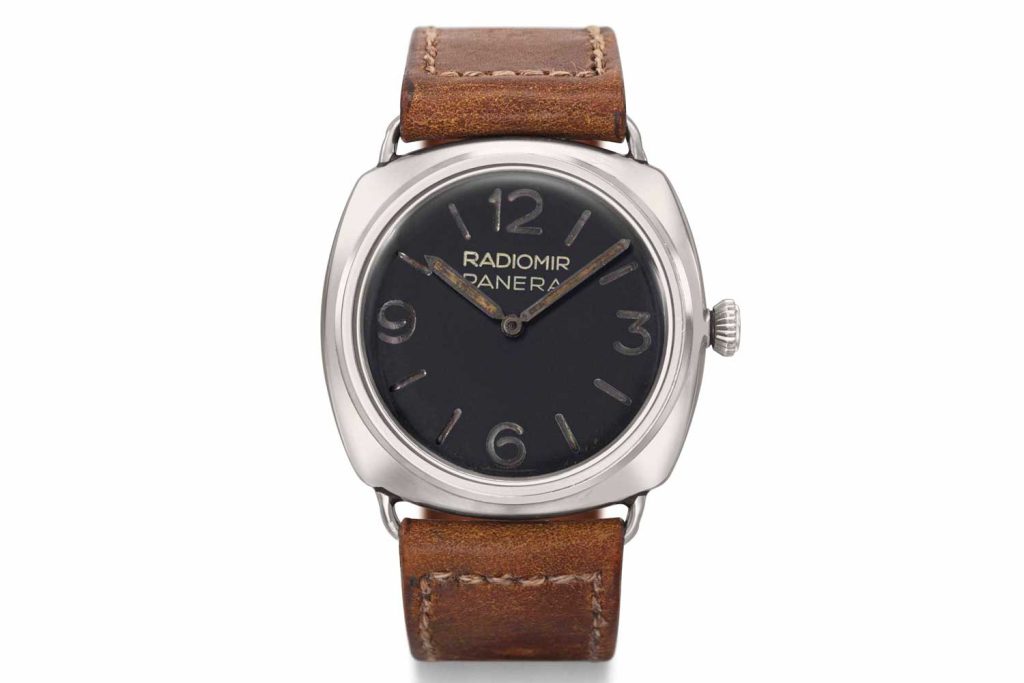
Panerai Radiomir, circa 1942. (Image: Christie’s)
Radiance, always. As decades passed, collector interest in vintage Italian luminescent service equipment only increased, commanding extraordinary prices at auction. Eventually, Officine Panerai responded to the market. In 1993, it reissued the legendary Luminor—along with the Luminor Marina and Mare Nostrum chronograph—in limited runs available to the public. The buzz surrounding these pieces dovetailed into an instant-classic cameo on Stallone’s wrist in the action-thriller Daylight. The momentum helped Panerai score an investment from the Vendome Luxury Group, now known as Richemont, in 1997.
A careful rollout began in Italy the following year, with a global launch planned for 1999. Two models made worldwide debuts, the Luminor and Luminor Marina, in three different variations. The Mare Nostrum also got a rerelease, after being updated slightly to improve non-tactical wearability. The case sizes of these pieces, all measuring 44 mm or larger, made them unlike any other luxury watch available, lending an unusual appeal that proved self-evident. Other current-day Panerai signatures, most of them highly-stylized nods to the brand’s military roots, were established here as well: the unmistakable cushion-shaped case, the unique crown locking system, the superior water resistance.
Panerai’s relaunch was something of a perfect storm, offering products whose historical narrative appealed to horology buffs and whose striking design language initiated a new generation of collectors. Market demand for big, bold luxury timepieces exploded; Officine Panerai rode the lighting. All the while, the core Paneristi eagerly snatched up each new watch added to the core collection. Wearing one, they could immediately imagine themselves taking on a daring underwater adventure or military operation, piloting the Luna Rossa in America’s Cup or sailing the Amalfi coast, or simply lifting a glass of rosé at the local trattoria.
Before the end of the decade, the P.9000 family of movements arrived, providing a strong foundation to bolster and expand the core collections. Panerai slowly started replacing base calibers with its own in-house creations, which soon included automatic movements with chronograph flyback functions and fascinating regatta countdown timers. Finally, in 2014, a new manufacturer was inaugurated at Pierre-à-Bot, on the hills of Neuchâtel. It allowed for further research and development, manufacturing, assembly, and quality control, all under one roof. The final union between Italian design and Swiss watchmaking. Today, Panerai’s Laboratorio di Idee takes this concept and goes one step beyond.
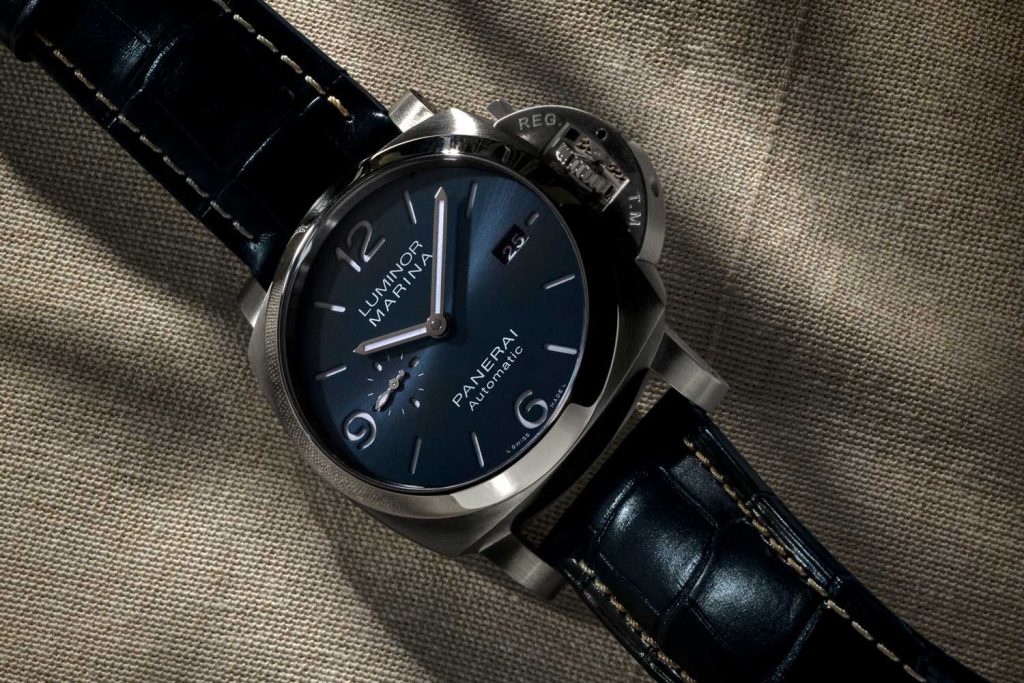
The Luminor Marina 44mm PAM01313 features the P.9010 calibre, entirely developed and created in the Panerai Manufacture in Neuchâtel. (©Revolution)
There is plenty to be said about the artistry of Laboratorio di Idee. But Panerai’s forward-looking mindset extends beyond the physical space. Aiming even higher, the brand is looking to expand its universe with the launch of the PAMCAST this summer. This multimedia platform will provide in-house editorial content, offering one-of-a-kind experiences and storytelling journeys, like exploring the best diving sites in Italy, from Porto Santo Stefano to Portofino. Through web content, podcasts, and Spotify playlists, the company can paint a fuller picture of its identity. La dolce vita, Panerai style. No doubt, the Paneristi will come in droves.
“This project took inspiration from the huge streaming media industry and targets new levels of expectation, strengthening brand advocacy,” Pontroué says. “We believe this impactful content will allow our community members to feel closer and let them have a deep dive in the Panerai world.”
What draws them to that world is cohesion and balance—Italian design and Swiss mechanics, complex and effortless, all in concert with history. And as any brand devotee will tell you, this year is of particular reverence, as it marks the 70th anniversary of the original Luminor. Today, the Luminor is considered a technical landmark.
Fittingly, Panerai has chosen this moment to announce its latest technological breakthrough, a new generation of high-performance “X1” Super-Luminova. Not only is this said to be brighter and more durable, but the stealth detail looks different in daylight depending on application: white lume for a blue dial, grey on a white dial, and neon green for a black dial, a distinctive colorway that recalls the original Luminor. Pontroué calls it “an important aspect of the functionality of the design,” ensuring the next generation of Panerai watches “glow in the greatest depths of the ocean and at night.”
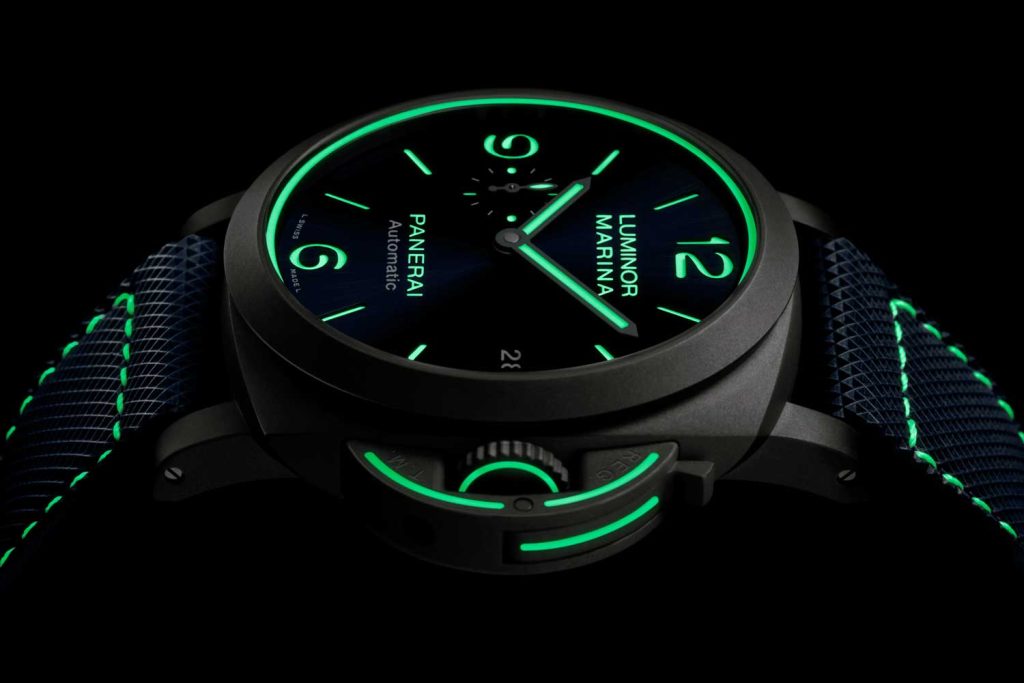
A new and generous application of Super-LumiNova makes the PAM01117, PAM01118 and PAM01119 feel like a 21st century neo-futuristic product.
Meanwhile, another new Luminor Marina (PAM01313) joins the collection this year. Its satiné soleil sunray-finish blue dial is paired with a corresponding blue alligator strap, or the optional rubber alternate. It’s accompanied by a sibling piece, PAM01314, which is the real knockout of the group. Here, a white dial appears in a sandwich configuration, a layered style that intensifies luminescence, for the first time in any Panerai collection. Underpinning both watches is Calibre P.9010, a svelte automatic movement designed and built in Neuchâtel, offering a full three-day power reserve. The hour hand can be set in steps, one hour forwards or back, while simultaneously adjusting the date, adding more real-world practicality.
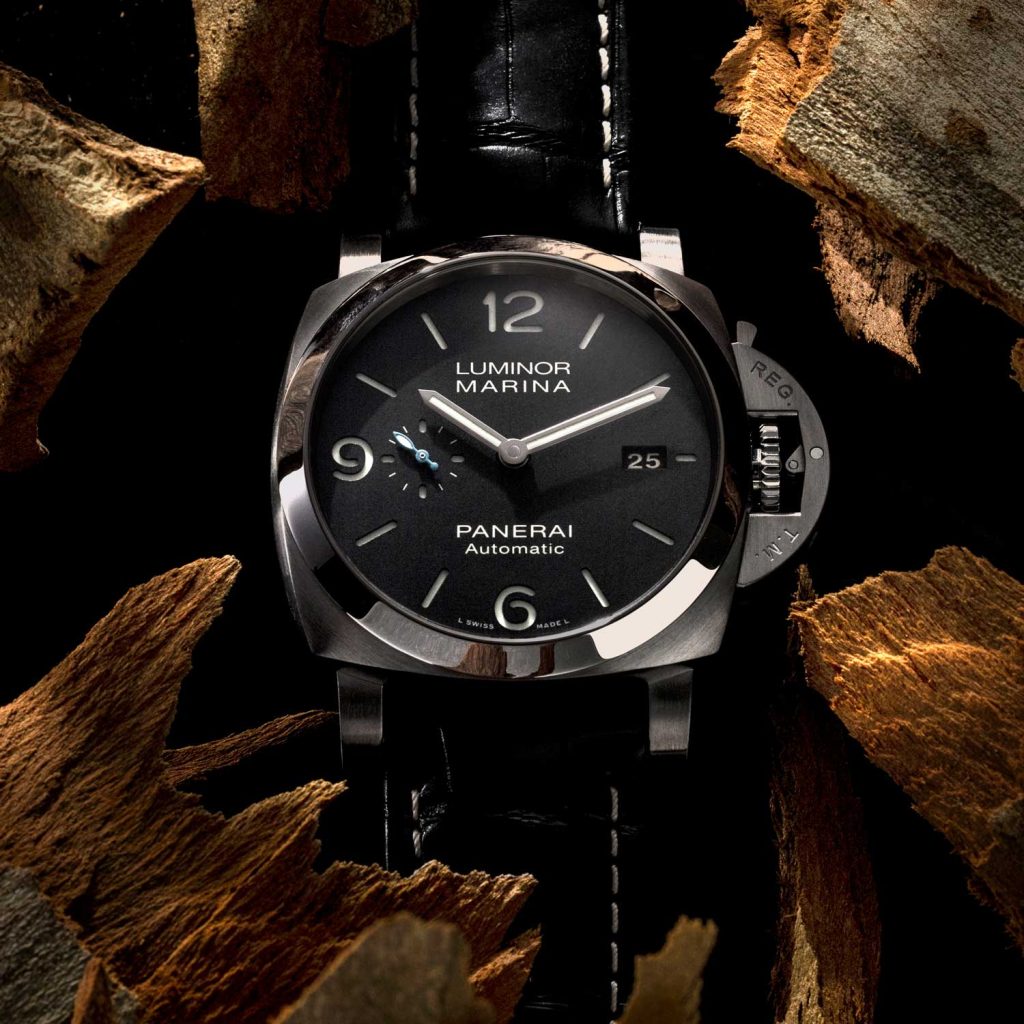
The Luminor Marina - 44mm PAM01312, the definitive modern-day classic. (©Revolution)
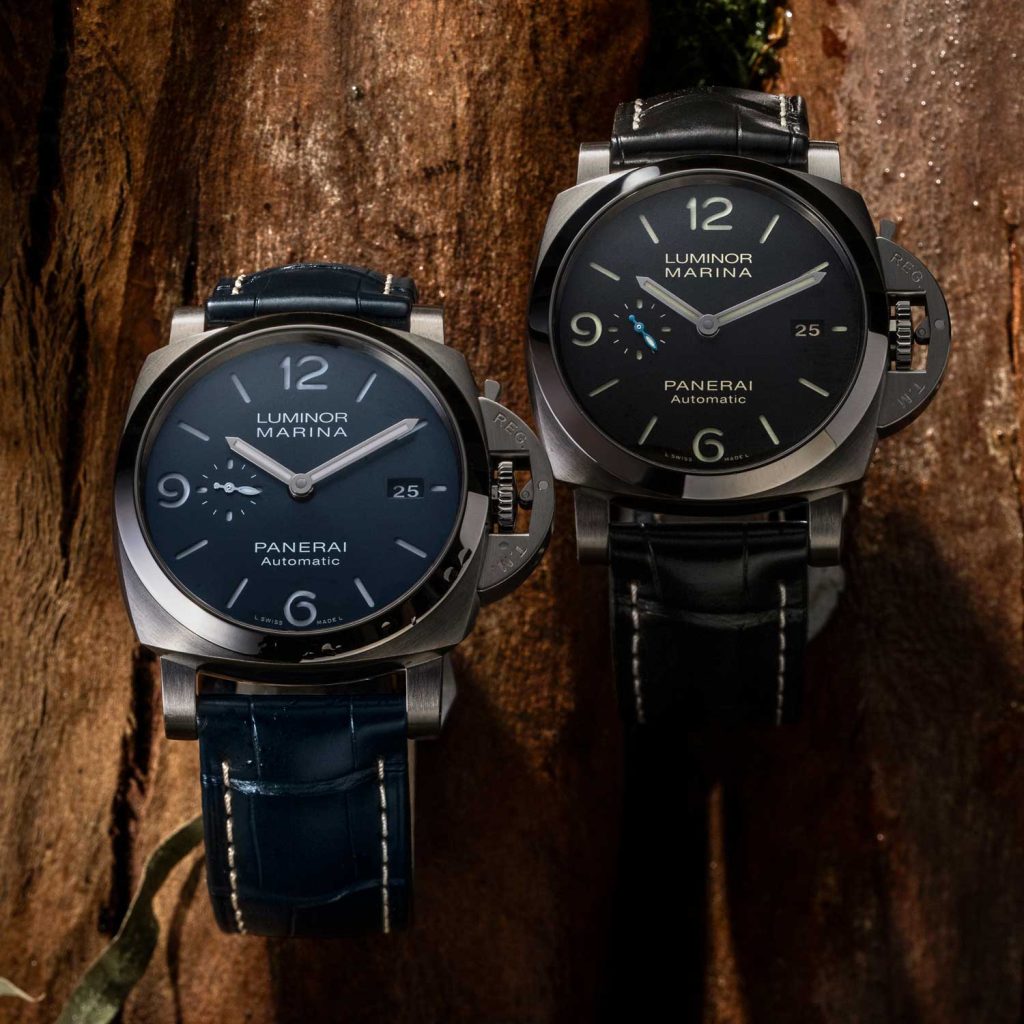
Joining the black PAM01312 is the PAM01313 with a handsome sun-brushed blue dial. (©Revolution)
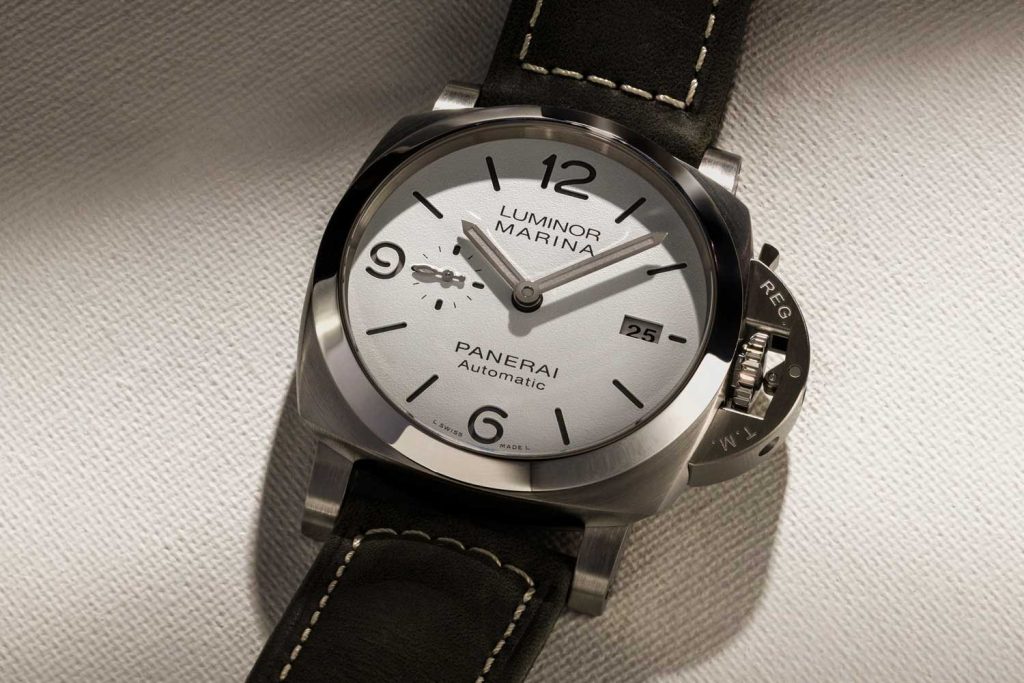
The Luminor Marina PAM01314 with a stunning white sandwich dial with new grey SuperLuminova and grey strap. (©Revolution)
The man understands his clientele. They will always buy into the Italian status and commando pedigree, the ingenious and straightforward design of that distinctive crown guard, and the durable materials that tie it all together. They want the glowing lumed Arabic and Roman numerals, the clarity and legibility of those dials, whose large hands and small seconds indicators have barely changed in size or appearance for decades. Because without bending to trends or gimmicks—avoiding the superficial, as it were—Panerai has been able to evolve by celebrating its strengths, adapting gradually over time, rarely if ever misstepping. Sprezzatura, indeed.
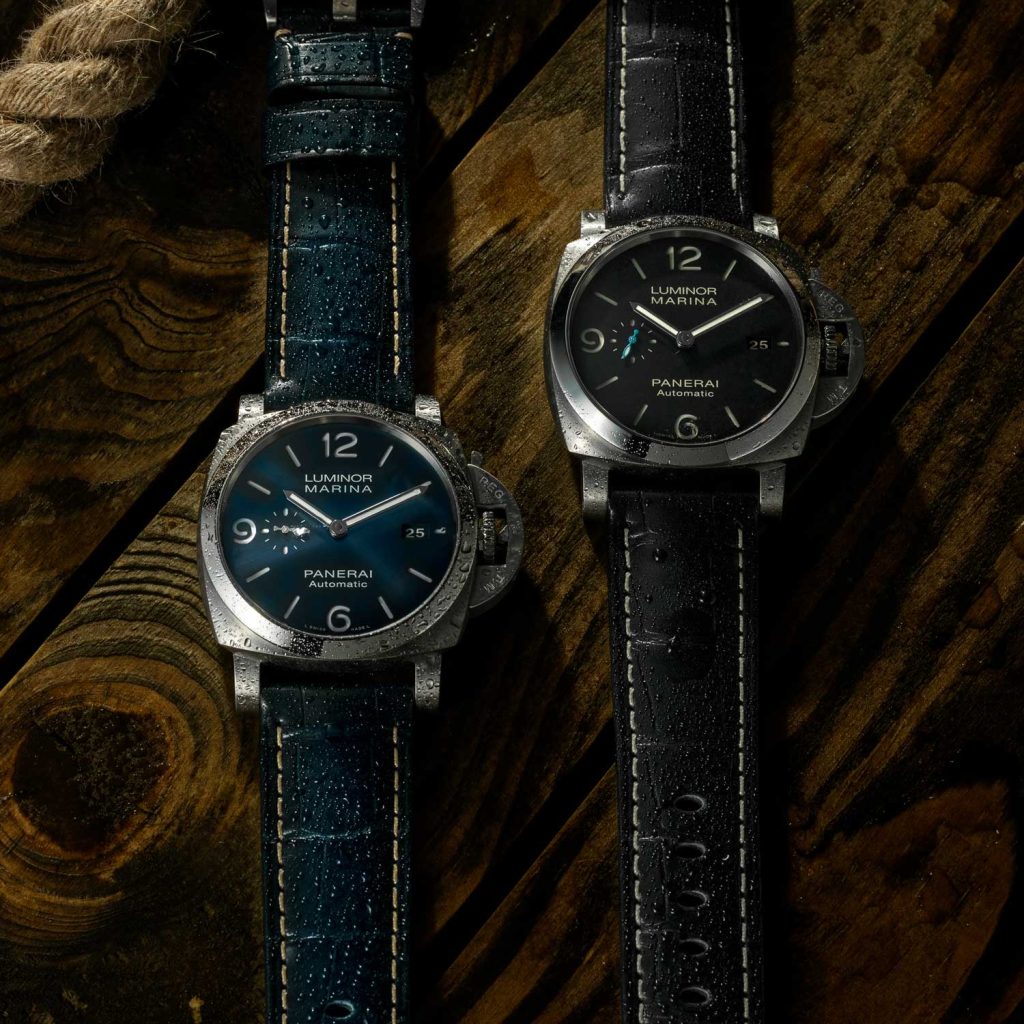
The PAM01313 and PAM01312, perfect for underwater adventures, piloting a craft in the America’s Cup, sailing the Amalfi Coast, or simply lifting a glass of rosé at the local trattoria. (©Revolution)
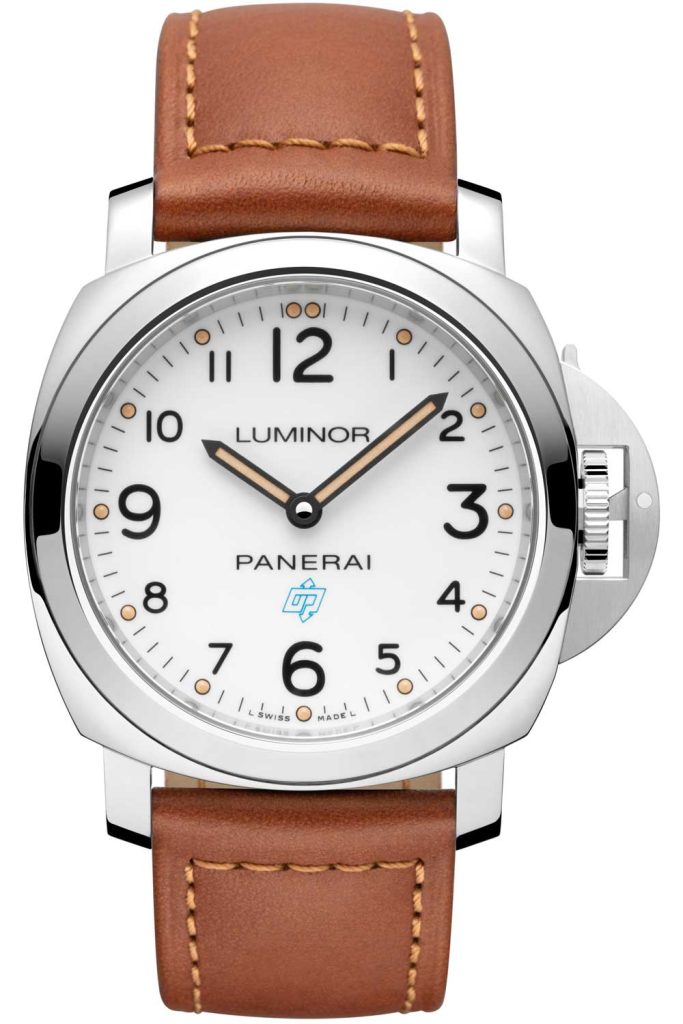
The PAM775 features the throwback “OP” logo from Panerai’s first publicly sold collection of watches.
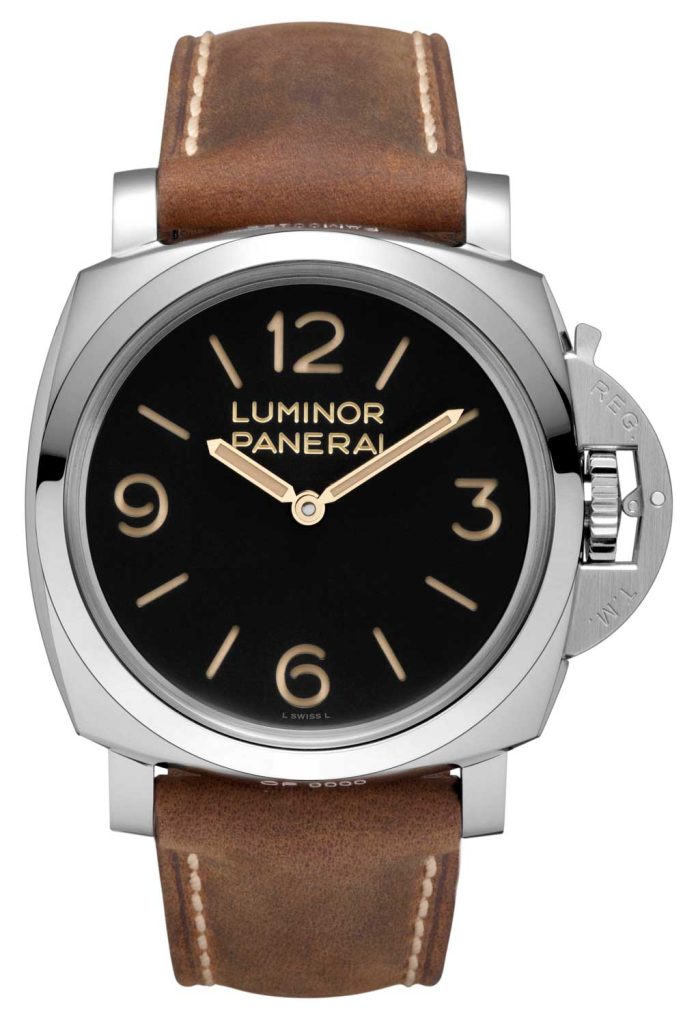
The PAM372, an homage to the original, down to the use of Plexiglass crystal instead of sapphire.
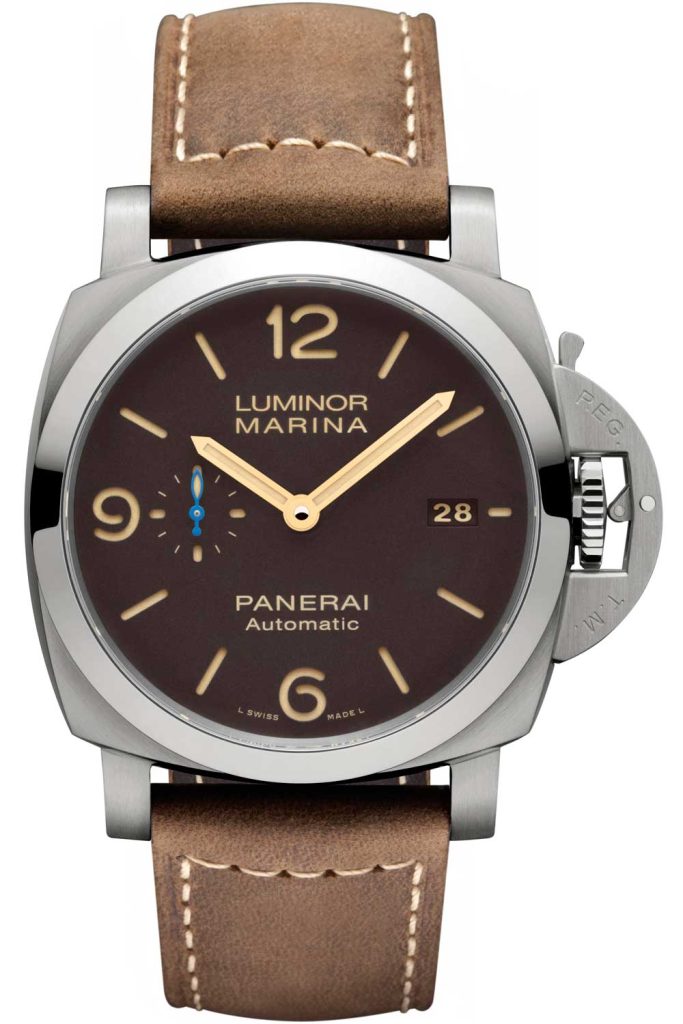
PAM1351, an example of Panerai’s most iconic dial size - 44mm in titanium with a vintage look brown dial.
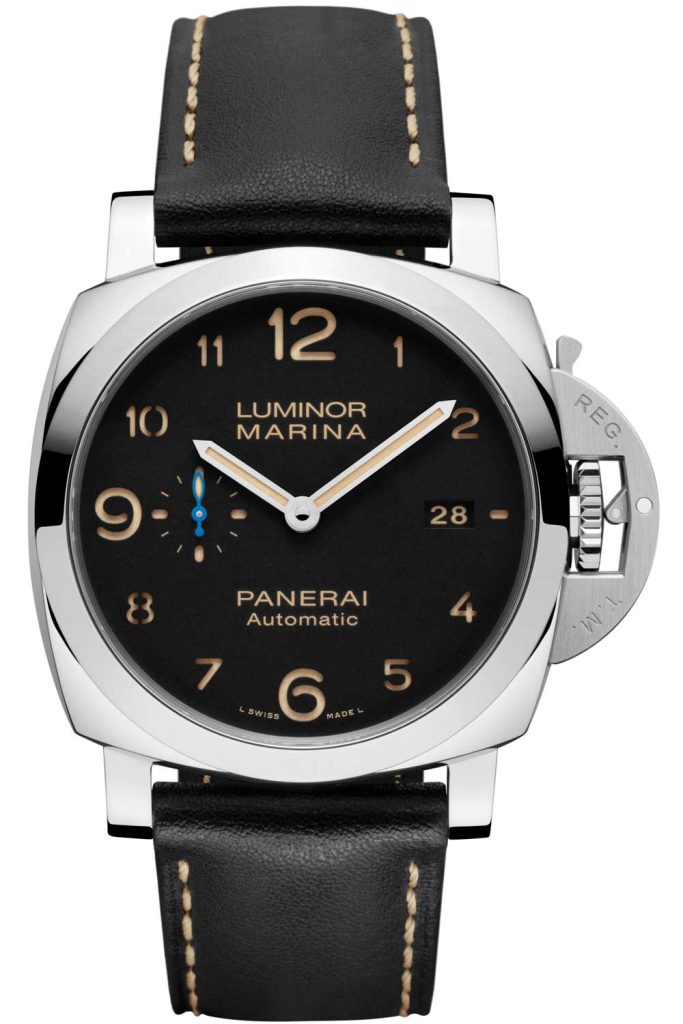
The PAM1359 with “dirty dial” as it is affectionately known, features all Arabic numerals with a beige-brown lume color for a unique vintage appearance.
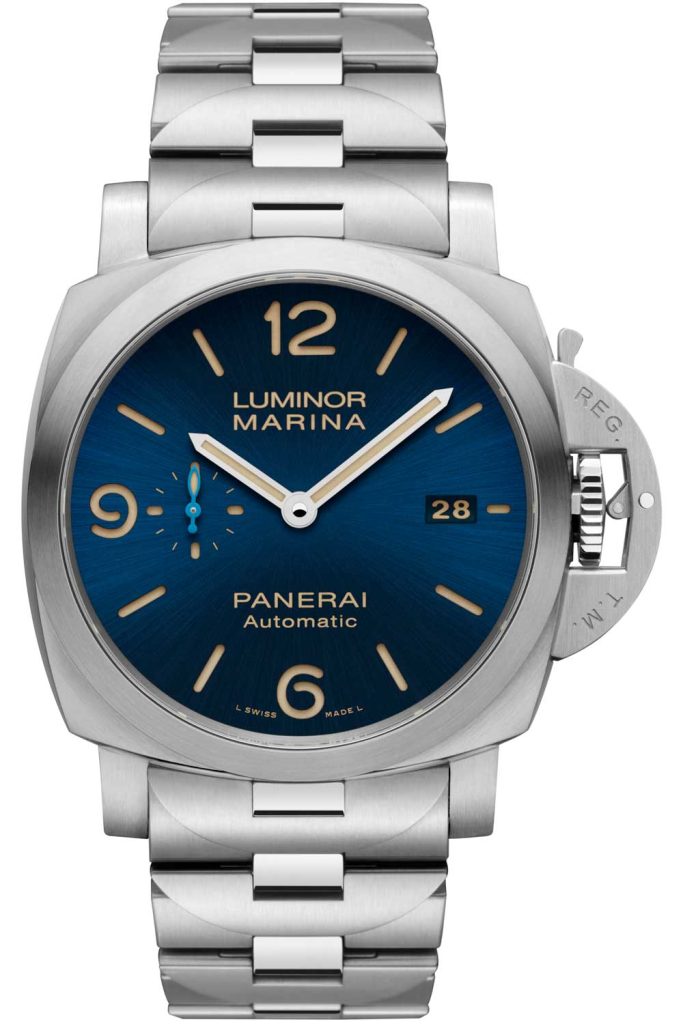
The PAM1058, the latest iteration of the first bracelet design, a detail beloved by serious collectors.
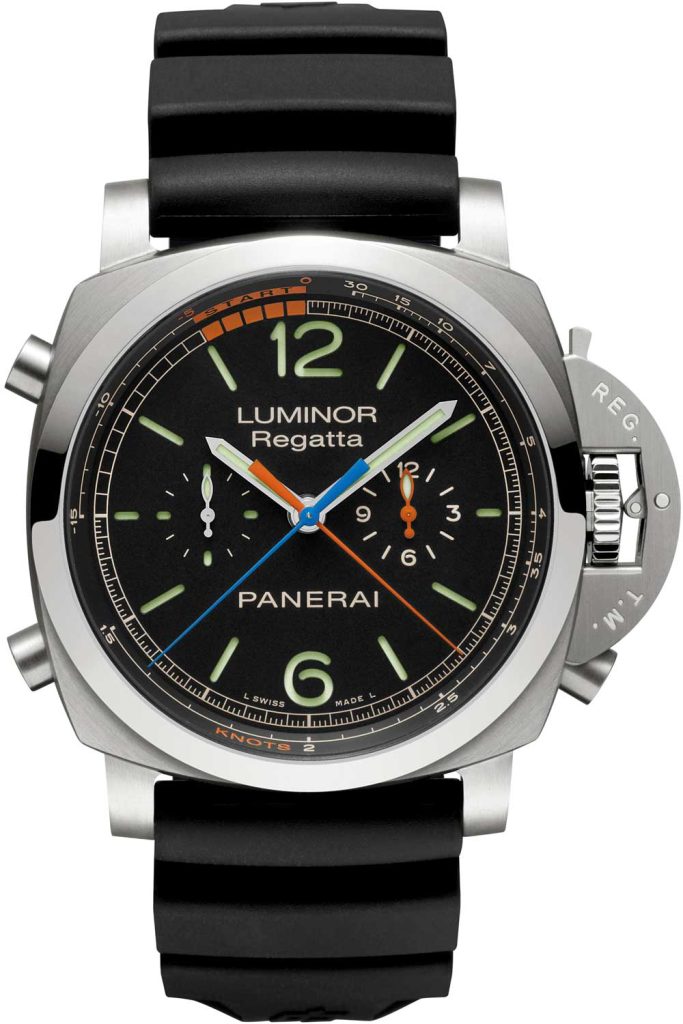
The PAM0526 is a classic Luminor that houses Panerai’s in house movement with a regatta timer, the only function in watchmaking made exclusively for sailing.
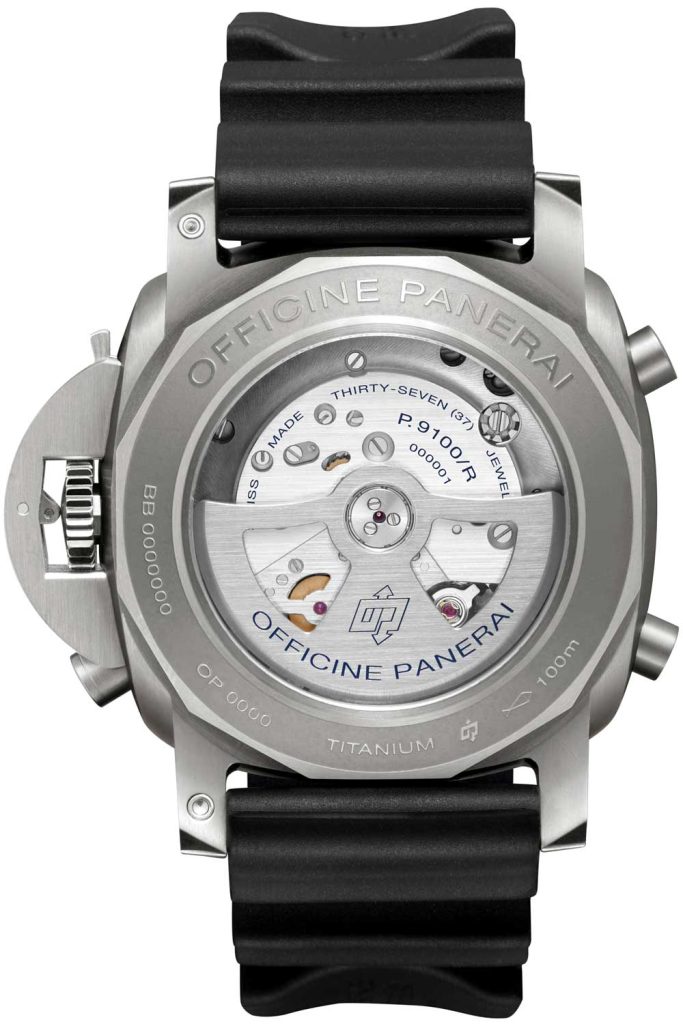
The PAM0526 is a classic Luminor that houses Panerai’s in house movement with a regatta timer, the only function in watchmaking made exclusively for sailing.
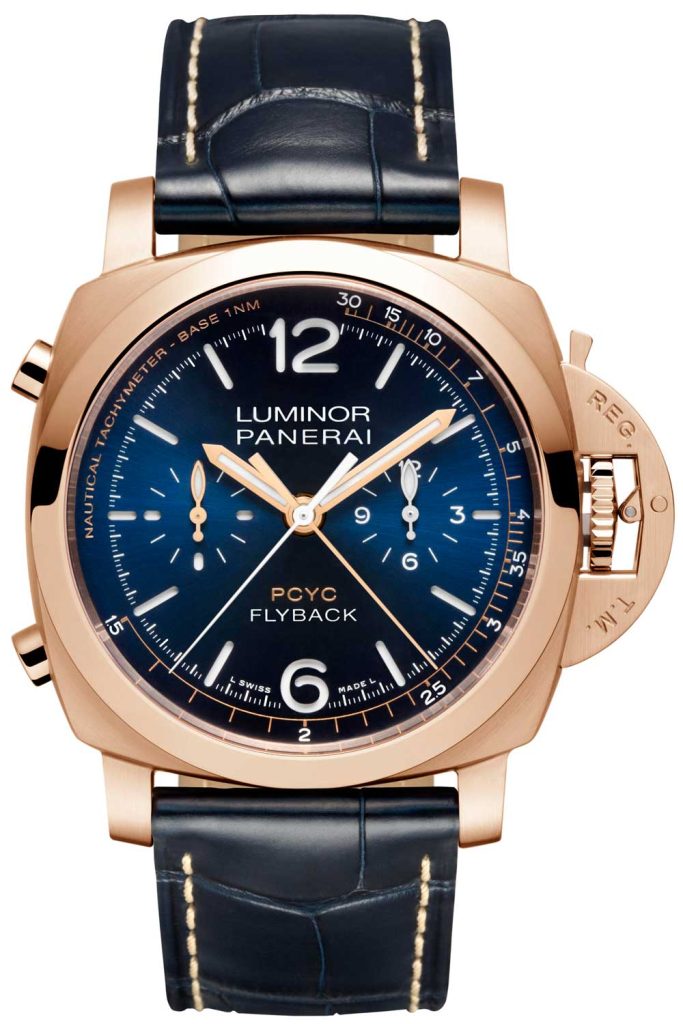
For the modern-day sailor, the PAM1020 commemorates the Panerai Classic Yacht Challenge “PCYC.”
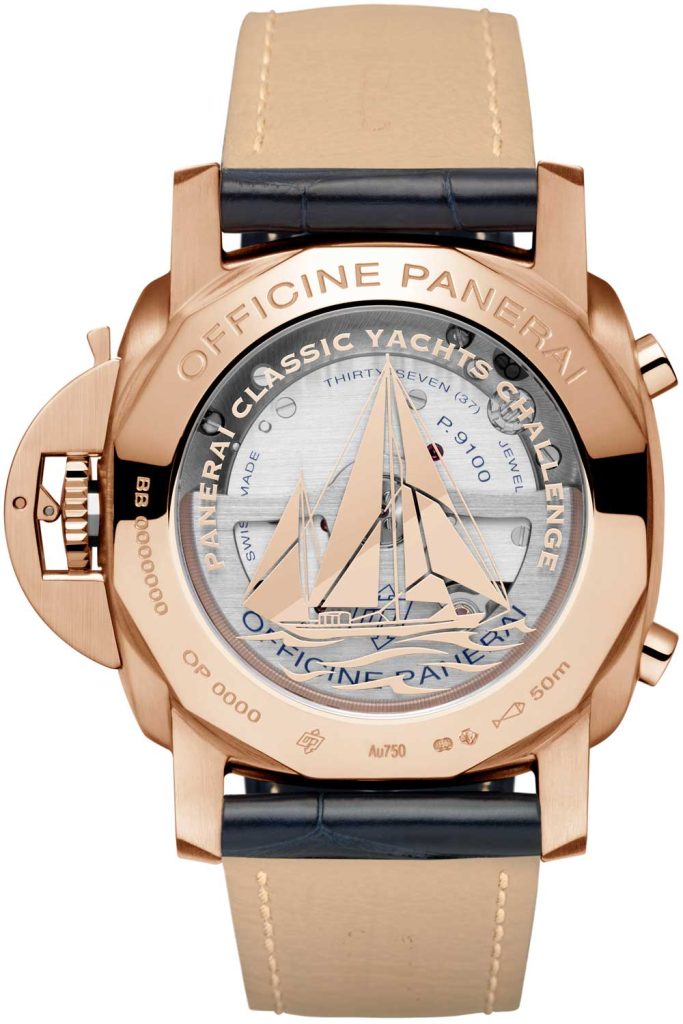
For the modern-day sailor, the PAM1020 commemorates the Panerai Classic Yacht Challenge “PCYC.”
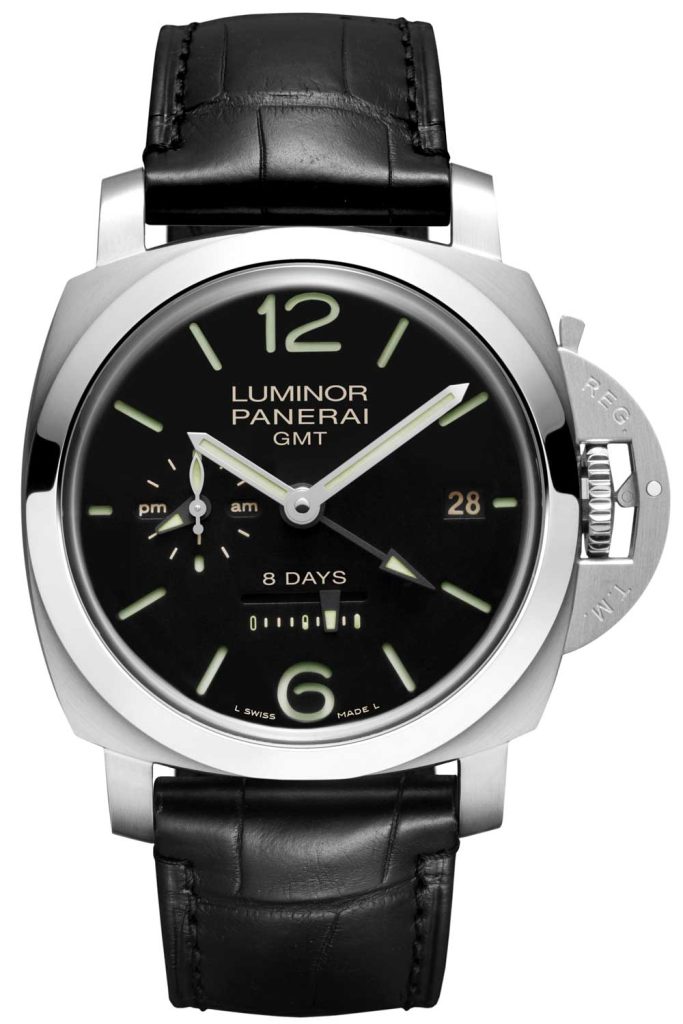
A favorite among collectors, the PAM233 houses Panerai’s first in-house P.2002 movement.
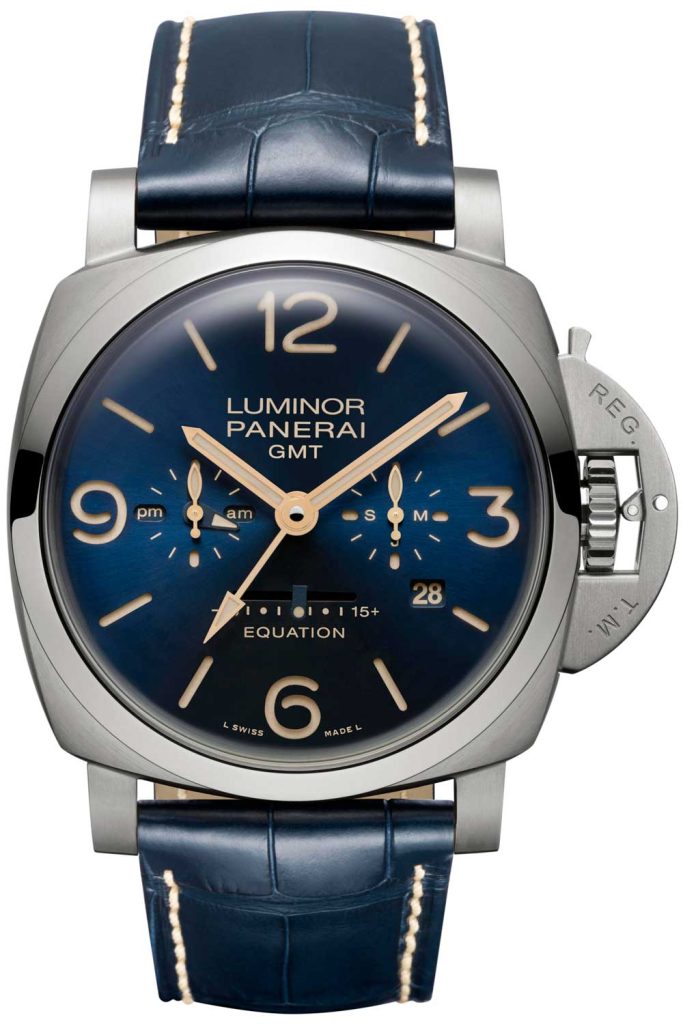
Housing the P.2002E in house movement, the PAM670 Luminor GMT Equation of Time features an AM/PM indicator, power reserve, date, and month.










